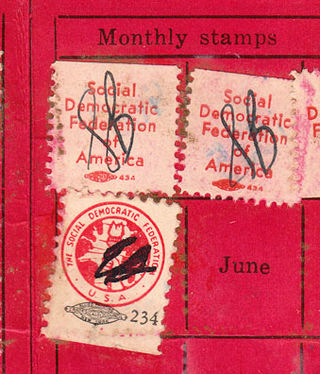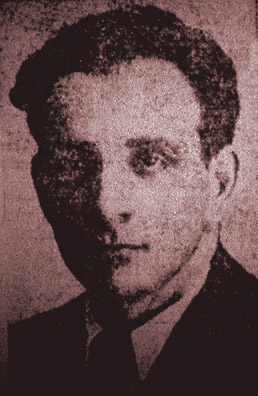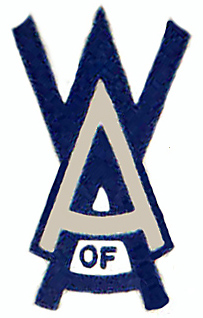
Earl Russell Browder was an American politician, spy for the Soviet Union, communist activist and leader of the Communist Party USA (CPUSA). Browder was the General Secretary of the CPUSA during the 1930s and first half of the 1940s. During World War I, Browder served time in federal prison as a conscientious objector to conscription and the war. Upon his release, Browder became an active member of the American Communist movement, soon working as an organizer on behalf of the Communist International and its Red International of Labor Unions in China and the Pacific region.

The Social Democratic Federation of the United States of America(SDF) was a political party in the United States, formed in 1936 by the so-called "Old Guard" faction of the Socialist Party of America. The SDF later merged again with the Socialist Party in 1957 to form the Socialist Party-Social Democratic Federation (SP-SDF).
The Rand School of Social Science was formed in 1906 in New York City by adherents of the Socialist Party of America. The school aimed to provide a broad education to workers, imparting a politicizing class-consciousness, and additionally served as a research bureau, a publisher, and the operator of a summer camp for socialist and trade union activists.

The Subversive Activities Control Board (SACB) was a United States federal committee. It was the subject of a landmark United States Supreme Court decision of the Warren Court, Communist Party v. Subversive Activities Control Board, 351 U.S. 115 (1956), that would lead to later decisions that rendered the Board powerless.

The Rapp-Coudert Committee was the colloquial name of the New York State Legislature's Joint Legislative Committee to Investigate the Educational System of the State of New York. Between 1940 and 1942, the Rapp-Coudert Committee sought to identify the extent of communist influence in the public education system of the state of New York. Its inquiries led to the dismissal of more than 40 instructors and staff members at the City College of New York, actions the committee's critics regarded as a political "witch-hunt."
The Tamiment Library is a research library at New York University that documents radical and left history, with strengths in the histories of communism, socialism, anarchism, the New Left, the Civil Rights Movement, and utopian experiments. The Robert F. Wagner Archives, which is also housed in Bobst Library at NYU, documents American labor history. Together the two units form an important center for scholarly research on labor and the left.
Ellen Wolf Schrecker is an American professor emerita of American history at Yeshiva University. She has received the Frederick Ewen Academic Freedom Fellowship at the Tamiment Library at NYU. She is known primarily for her work in the history of McCarthyism. Historian Ronald Radosh has described her as "the dean of the anti-anti-Communist historians."
Gil Green was a leading figure in the Communist Party of the United States of America until 1991. He is best remembered as the leader of the party's youth section, the Young Communist League, during the tumultuous decade of the 1930s.

William Wolf Weinstone (1897–1985) was an American Communist politician and labor leader. Weinstone served as Executive Secretary of the unified Communist Party of America, the forerunner of today's Communist Party USA, from October 15, 1921, to February 22, 1922, and was an important figure in the party's activities among the auto workers of Detroit during the 1930s.

During the ten decades since its establishment in 1919, the Communist Party USA produced or inspired a vast array of newspapers and magazines in the English language.
Alexander "Alex" Bittelman (1890–1982) was a Russian-born Jewish-American communist political activist, Marxist theorist, influential theoretician of the Communist Party USA and writer. A founding member, Bittelman is best remembered as the chief factional lieutenant of William Z. Foster and as a longtime editor of The Communist, its monthly magazine.

Morris U. Schappes was an American educator, writer, radical political activist, historian, and magazine editor, best remembered for a 1941 perjury conviction obtained in association with testimony before the Rapp-Coudert Committee and as long-time editor of the radical magazine Jewish Currents.
The New York Workers School, colloquially known as "Workers School", was an ideological training center of the Communist Party USA (CPUSA) established in New York City for adult education in October 1923. For more than two decades the facility played an important role in the teaching of party doctrine to the organization's functionaries, as well as offering a more general educational program to trade union activists.
Michael Harold "Mike" Nash (1946-2012) was an American labor historian, librarian, and archivist. Nash was the Director of the Tamiment Library and Robert F. Wagner Archives at New York University throughout the early years of the 21st Century until the time of his death. Nash is best remembered for the key role he played in first obtaining and then integrating the archives of the Communist Party USA into Tamiment Library's holdings, in addition to other acquisition projects.
The California Labor School was an educational organization in San Francisco from 1942 to 1957. Like the contemporary Jefferson School of Social Science and the New York Workers School, it represented the "transformed and upgraded" successors of the "workers schools" of the 1920s and 1930s.
Howard Selsam was an American Marxist philosopher.

The Workers Alliance of America (WAA) was a Popular Front era political organization established in March 1935 in the United States which united several efforts to mobilize unemployed workers under a single banner. Founded by the Socialist Party of America (SPA), the Workers Alliance was later joined by the Unemployed Councils of the USA, a mass organization of the Communist Party USA (CPUSA), and by the National Unemployed Leagues originating with A.J. Muste's Conference for Progressive Labor Action (CPLA) and successor organizations.
The San Francisco Workers' School was an ideological training center of the Communist Party USA (CPUSA) established in San Francisco for adult education in 1934. "It was a typical specimen of a Communist school, such as would come under investigation by federal and state authorities for decades afterward.". in the 1940, it emerged as the California Labor School.
Marvin E. Gettleman, was an American professor emeritus of leftist history, best known for the anthology Vietnam and America (1965).